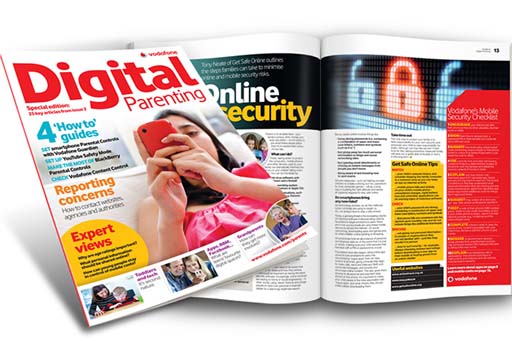1.3.3 Digital parenting

While the internet and technology represent both opportunities and risks for children, simply restricting access or removing technology from children’s lives seems inappropriate. Perhaps we need to review parenting methods so we ensure sufficient levels of support for children growing up in this highly digital modern world.
Jim Steyer, who you met in the video in Are children and adults today really so different?, said ‘As a parent in this 24/7 digital universe, there’re some new rules that we need to learn for ourselves, and then that we need to teach to our own children.’
What are these rules and how can parents actively support their own child’s safety online?
If we reflect back to self-determination theory, the idea of giving children autonomy and choice to make appropriate decisions about their own digital world could be the answer here. According to some social scientists, we need to trust in the maturity and judgement of children. We have to be able to trust their social skills in successfully negotiating these new ways of behaving and successfully managing or avoiding risks (Banyard and Underwood, 2012).
It is important to recognise that children’s perceptions of problematic online situations may differ greatly from those of adults. Because of the different perceptions of adults and youngsters, and the lack of a neat distinction between positive and negative experiences online, many psychologists opt to avoid the term ‘risk’, and prefer to talk about ‘problematic situations’.
A recent EU Kids Online project (Vandoninck et al., 2014), based within the UK, tackles the idea of giving children autonomy to make their own choices. Awareness of online risks motivates children to concentrate on how to avoid problematic situations online, or prevent them from (re)occurring. This brings us to the concept of preventive measures – what children actually do or consider doing in order to avoid unpleasant or problematic situations online.
Sofie Vandonick and colleagues (2014) identified five main categories of measures discussed in the literature:
- Problem-solving strategies. Teach children the appropriate actions and strategies to allow them to tackle the possible risks.
- Planning, reflecting. Encourage children to reflect on how they would prevent hypothetical (‘what if?’) problems, deciding on how and why these risks occur and how they would determine whether a hypothetical situation is problematic or not.
- Information seeking. Increase children’s knowledge and understanding about the kinds of online security and risks.
- Support seeking. Encourage children to approach others (parents, teachers) to obtain advice should problematic situations occur. This should help prevent further incidents or problematic situations from happening.
- Fatalistic approach. Accept the situation that risks are out there, without trivialising or generalising the situation.
Perhaps a key focus should be on helping children to acquire the knowledge and skills to moderate their own online behaviours; to develop resilience to risks and to become responsible digital citizens of the twenty-first century (Banyard and Underwood, 2012).
If you are interested, read Preventative measures – how youngsters avoid online risks, by Sofie Vandonnick et al. (2014) [Tip: hold Ctrl and click a link to open it in a new tab. (Hide tip)] .
